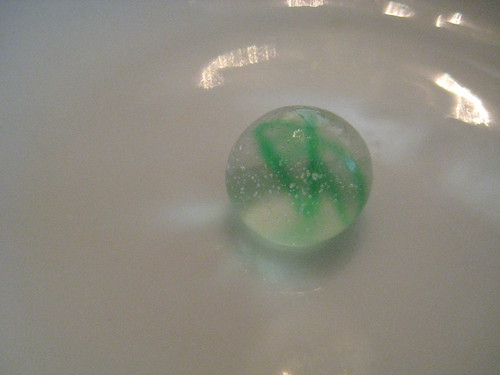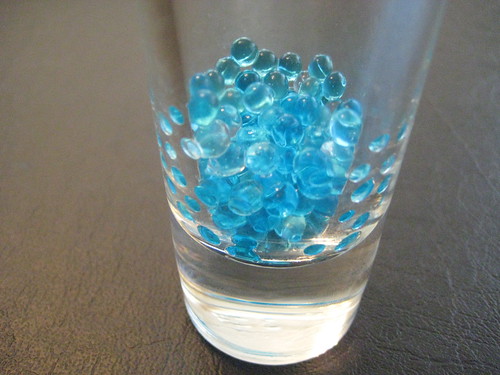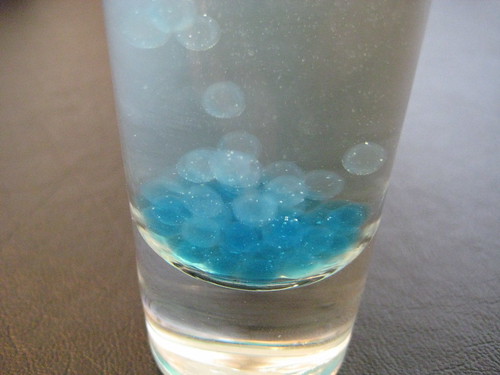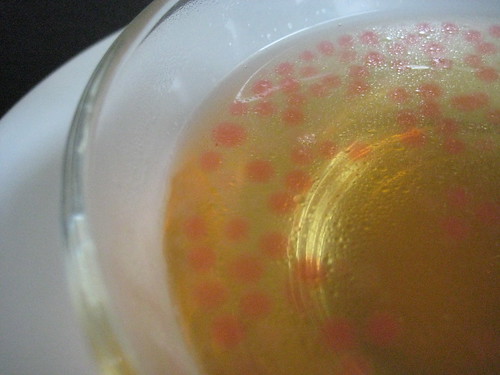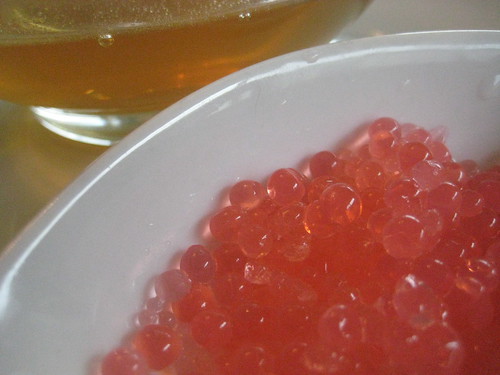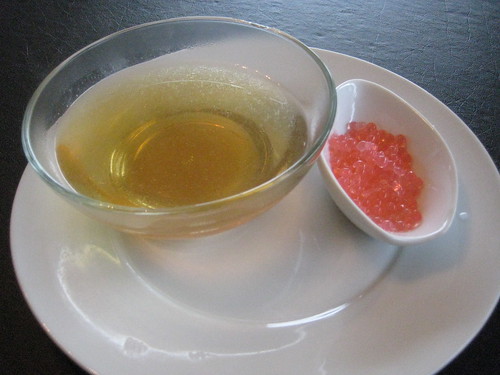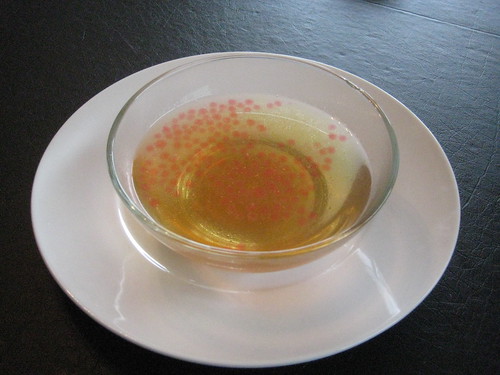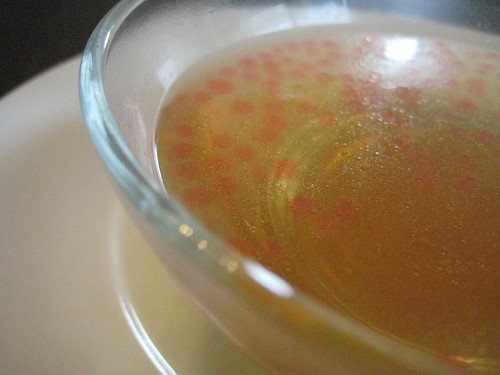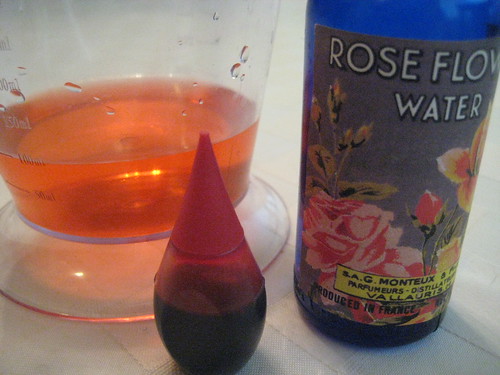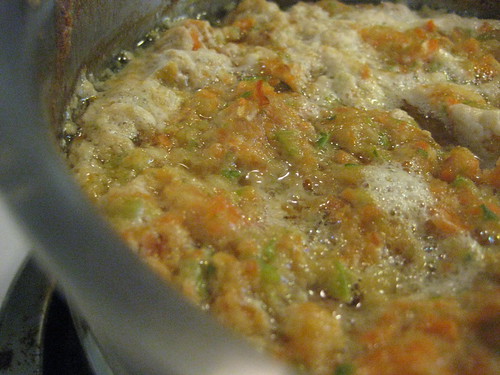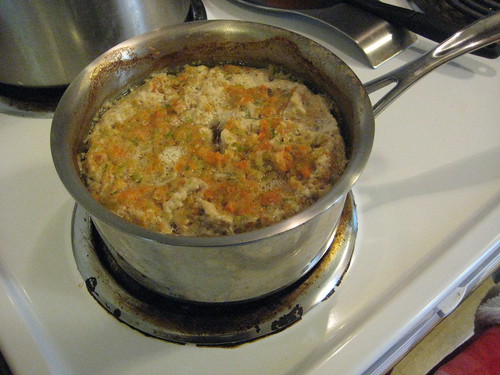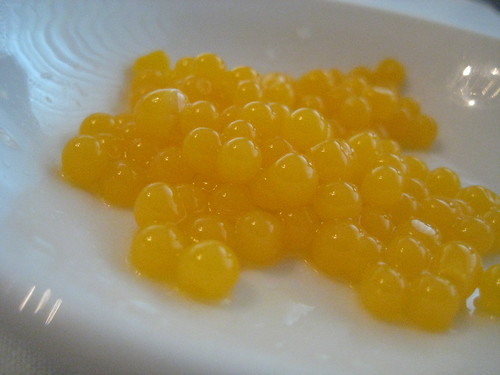
Tonight, Marcy & James hosted the latest edition of Memento Meal at their Tacoma home. The theme this time around was the ancestry of their daughter, Penelope - with each course representing one of the nationalities that make up her heritage.
Our gracious hosts whetted our appetites with some charcuterie and cheese, and plenty of wine, of course, before introducing the first appetizer.

Accompanied by Marcy singing the Luxembourg national anthem, the course was a hearty serving of Mussels in a wine sauce with onion, shallots, thyme, and tarragon, accompanied by a bowl of creamy potato & leek soup. A very decadent, rich start to the meal.


Next up were the guests for this round - Lyssa & Andrew - with a tribute to French Canada. These two really brought it - with music of Quebec in the background while they served us Bootlegger's Lemonade - a pink lemonade spiked with homemade ginger syrup and a bottle of gin (passed around the table so each guest could control the amount of gin in their cocktail).

Then the plates arrived, with crisp, gluten-free homemade crackers perched across the plates, stacked high with maple baked beans, slow roasted tomatoes, bacon, and basque salt. The flavors were really wonderful, each standing out and marrying together with the others simultaneously. The baked beans seemed to strike a familiar note with a lot of folks, Dan included - reminding them of baked beans of their own childhoods.
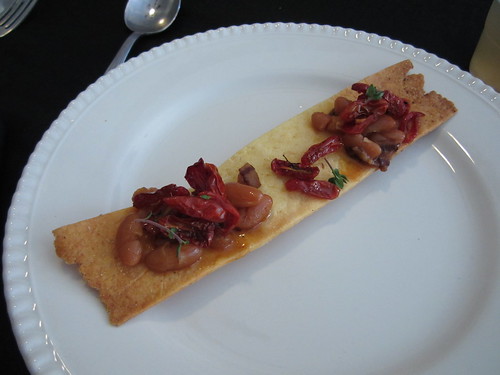
Dan & I then served our Italian "Salad" course. Italian Salad said one thing to Dan & I: Insalta Caprese - the classic salad of sliced tomatoes, mozzarella, and basil, often drizzled with some olive oil, balsamic vinegar, and salt & pepper. Dan had the great idea to reimagine it as a chilled soup, something like a gazpacho... and then I got involved.

I placed some orders with Le Sanctuaire and Amazon.com for a variety of food grade chemicals and additives, to enable a molecular gastronomic take on a chilled caprese soup. My thought was that since the original inspiration is a deconstructed dish to begin with, I'd maintain the integrity of that by making the soup deconstructed - also adding in the element of interactivity as the guests combine the components together to create the soup on the fly.
We started with ramekins (a nod to the dish that would follow us), and filled them half-way with a simple chilled gazpacho of peeled & seeded vine-ripened tomatoes, garlic, onion, salt and white pepper. We topped that with an espuma of basil created using my Isi charger and the help of soy lecithin
Somehow I failed to get a shot of the full dish, or the dish after each guest broke through the mozzarella sphere and the tuile to mix all the components together. The bright pink of the tomato and the brilliant green of the basil were set off nicely by the brown, cream and white of the other ingredients, and beyond being beautiful, it turned out to be tasty, too. Everyone seemed to enjoy it, but if I ever make it again, the mozzarella sphere will be bigger (or there will be multiple), as there just wasn't enough mozzarella for more than "one perfect bite".
Accompanying our dish was a bubbly Prosecco wine.

For the first entree course, Anna & Jason took us to Ireland.

We started with a Black & Tan, and were presented with a placemat made especially for the occasion, depicting the "Irish Food Pyramid".

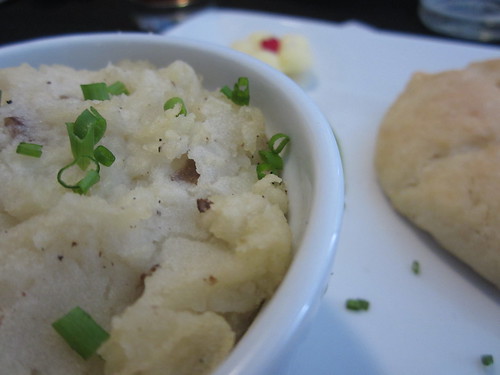
Then a gorgeous and delicious plate of food arrived, featuring a lamb shepard's pie (a family recipe), soda bread, orange marmalade, and homemade butter topped with sea salt (and in the shape of flowers, with little raspberry drupes.
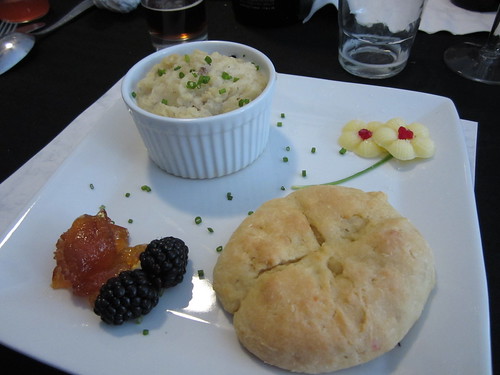

Next up were Gerald and Robyn with a tribute to Penelope's Germanic roots - in the form of homemade veal and pork sausage, braised in beer (of course), and served with saurkraut and homemade spaetzle topped with orange zest, plus a honey mustard for dipping. I ended up eating all of mine, plus half of Carolyn's sausage, and licking the mustard bowl clean.


As the meal wound down toward it's finish, Carolyn and David served up decaf in three French Presses, accompanied by fresh whipped cream.

They had run into challenges with their Spanish dessert course - possibly the most challenging combination, given none of us could think of a dessert that epitomized Spain. But the end result of the difficult process was wonderful.

Visually, it appeared to be a dense, crisp dish, but when I cut off a piece and put it in my mouth, the airiness of their Almond cake with orange reduction blew me away. Made using whipped egg whites, it was akin to a angel food cake in consistency, but to a French macaron in flavor. It was served with a dollop of almond whipped cream, as well. It was a perfect light finish to a meal that took us all over the map, in many senses of the word.

Watching the proceedings from her perch on high was one of Marcy & James cats, who it turned out was eagerly awaiting her own dinner.

In preparation for the next Memento, Dan and I put together some packets to inspire our fellow chefs.

A few Memento meals ago, the idea came up of a Science Fiction theme - which Dan & I loved. I measured out 5 gram quantities of 8 different food chemicals, put in small food grade zip lock bags, and all placed in mylar food grade envelopes. On the front, I put a Star Trek logo with a whisk added, and altered the classic opening voice over of the original Star Trek show with a more culinary version:
Food: The Final Frontier. These are the dinner parties of the Supper Club Memento. Our June 25th, 2011 mission: To explore strange new ingredients, to seek out new techniques and new flavors, to boldly go where no chef has gone before.
(though now I realize it had a typo)

I'm excited to see how our friends intepret "Science Fiction" in their dishes. Despite my Star Trek leanings, science fiction is a broad concept - from post-apocalyptic dystopia scenarios like Mad Max, to space drama like Stargate, to things like Lost - and is as much a literary genre as it is a film and TV genre. Each dish could really represent something very, very different. We'll just have to wait to see!
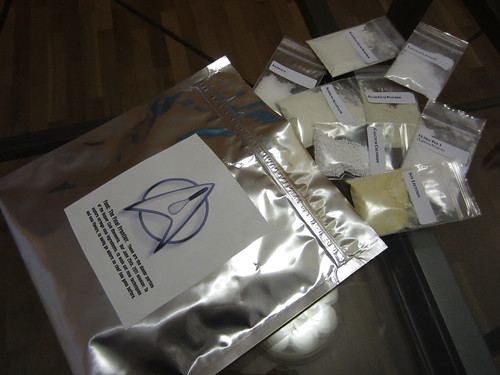
Mozzarella Spheres
220 g Buffalo Mozzarella
150 g Mozzarella whey (the liquid from the tub)
5 g Calcium Lactate
Combine well with an immersion blender.
1 L Purified Water (with little or no mineral content)
5 g Sodium Alginate
5 g Sugar
Warm on stove an blend with immersion blender.
Using a large measuring spoon or a ice cream scoop, spoon balls of the mozzarella mixture into the sodium alginate bath, and let them sit for 5 minutes, turning once gently with your fingers. Remove from the bath and rinse gently with cold water. Store in a airtight jar of water in the refrigerator.
Olive Oil Powder
80 g olive oil
60 g tapioca maltodextrin
3 g sea salt
Whisk to combine, adding tapioca maltodextrin until a powder forms. If a finer powder is desired, press through a chinoise. Store in an airtight container at room temperature.
Balsamic Tuile
30 ml balsamic vinegar
30 g organic sugar
10 g butter
40 g flour
Preheat oven to 350°F. Blend all ingredients together well. Spoon onto a silicon baking sheet lined sheet pan, and spread with the back of a rubber spatula until thin and in the desired shape. Bake until lightly browned, about 10 minutes.
Basil Foam
500 ml water
1 bunch basil
5g Lecithin
5g Xanthan Gum
Blanch basil in boiling water for 30 seconds, then shock in ice water. Pulse in blender with enough of the blanching water to create a paste. Strain the paste through a chinoise back into the blanching liquid, pouring some of the liquid over the paste to extract as much of the flavor and color as possible. Chill. Add liquid, lecithin and gum to Isi and charge. Keep chilled until serving.





